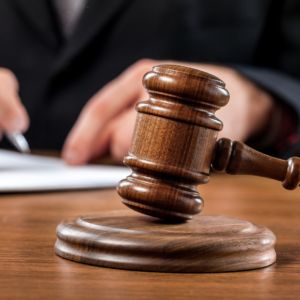Last week a 9th U.S. Circuit Court of Appeals panel heard arguments in what many environmentalists are calling the case of the century — Kelsey Rose Juliana v. United States.
The narrow issue before the court is whether the rights claims of Juliana and 20 other youth plaintiffs can be considered on the merits before the District Court for the District of Oregon. But for the case to go to trial, the appellate judges must first agree that the plaintiffs have a constitutional right to “a climate system capable of sustaining human life,” and that they have the constitutional authority to order the president and Congress to take actions that both branches have heretofore declined to take.
The plaintiffs claim that federal government policies have encouraged the use of fossil fuels and thus caused them irreparable harm. They also claimed in the trial court that independent from any statutory enactment the government has an affirmative duty to do more to mitigate climate change, although plaintiffs’ counsel backed away from this more extreme claim before the 9th Circuit. These government actions and inaction, contend the plaintiffs, violate their right to due process and their rights under the common law public trust doctrine.
Counsel for the government argued that plaintiffs had failed to state a “case or controversy” as required by the Constitution, were seeking to skirt the Administrative Procedures Act and the various organic acts passed by Congress, and were trying to constitutionalize administrative law.
But Judge Andrew D. Hurwitz quickly cut to the chase in recognizing that the real issues the court must resolve are whether or not the claimed rights exist and whether it is the role of the courts to pass judgment on the adequacy of federal climate policy.
If all judging is politics as current partisanship over federal judicial appointments suggests, the plaintiffs could not have done better than to draw a panel of three Obama appointees. Judges Hurwitz and Josephine L. Staton (sitting by designation from the California District Court) were clearly sympathetic with the plaintiffs’ cause, while presiding Judge Mary H. Murguia was more circumspect. But all three recognized the magnitude of what they were being asked to do.
Although plaintiffs’ counsel insisted that their constitutional claim was firmly rooted in “bedrock” constitutional law, Hurwitz admonished that “you’re asking us to do a lot of new stuff.”
A lot of new stuff indeed. The trial court took the view that “federal courts too often have been cautious and overly deferential in the arena of environmental law” and that “the judiciary must not shrink from its role as a co-equal branch of government.”
But co-equal does not mean the courts have authority to legislate anymore than it means Congress has power to adjudicate rights. For the case to move forward to trial there must be a judicial remedy, yet the plaintiffs are seeking a clearly legislative remedy — implementation of an energy policy and plan to mitigate climate change.
While agreeing with Hurwitz that the other branches of government could give the plaintiffs the remedy they seek, plaintiffs’ attorney stated that they will not do so. To which the judge replied that maybe we have the wrong president and Congress, an observation that strikes at the heart of the broad litigation strategy behind Juliana and dozens of other cases.
The plaintiffs’ policy priorities have failed politically, so they have turned to the courts. But the remedy is not for a court to order Congress and the president to do what they have chosen not to do. Rather it is to elect a different president and Congress. That’s how it works in a democratic republic of separated powers.
The trial court opinion is testimony to why the case should not go to trial. Most striking among several, shall we say, innovative legal conclusions is that plaintiffs’ due-process rights are violated because the government’s actions and inaction “will permanently and irreversibly damage plaintiffs’ property, their economic livelihood, their recreational opportunities, their health, and ultimately their (and their children’s) ability to live long, healthy lives.”
So too will government actions and inaction with respect to education, health care, housing, police protection, foreign policy, national defense and the list goes on. As the government’s lawyer told the 9th Circuit, the plaintiffs’ theory of constitutional rights would open a floodgate of judicial second-guessing of executive and legislative choices.
The 9th Circuit will do themselves and our democracy a service by bringing this case to a close and leaving policy choices to the political branches of government.

